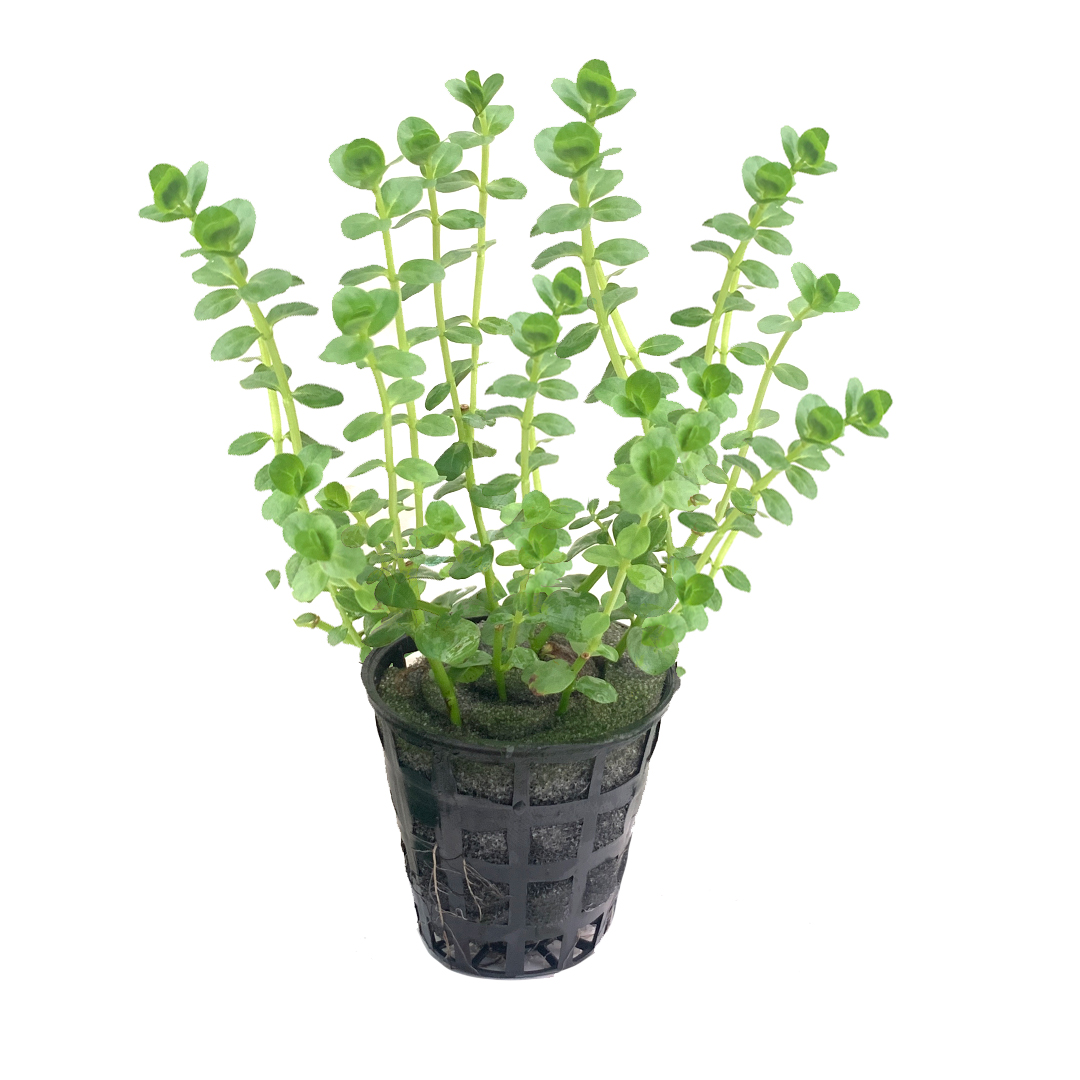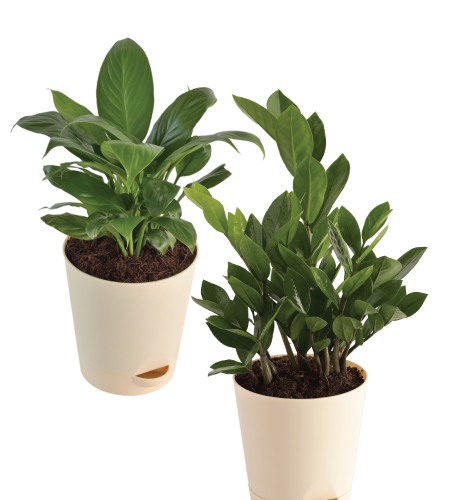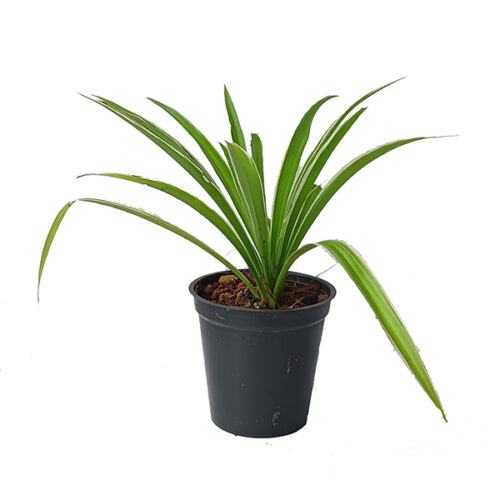Rotala rotundifolia [Tc] or Rotala Rotundifolia is a well-known and well-known Southeast Asian stem plant. It is distinguished by long delicate stems with thin round vertical leaves sprouting from the sides of the stems. This stem plant can develop an intense red coloration when dosed with high iron and Plant Food fertiliser. This plant is ideal for background placement and can provide a nice contrast to other green plants. Rotala Rotundifolia Red grows best when planted densely, with the bundles separated into individual stems and spaced about half an inch apart to allow each stem enough space to grow. When planted in groups, it creates a dazzling effect in your aquascape as a thick red bush. Propagation is similar to that of any other stem plant; simply cut and replace anywhere along the stem. Because this plant grows quickly, frequent pruning is recommended to keep it thick and prevent the bottom leaves from becoming light-deprived. Rotala rotundifolia (variants include Rotala Colorata, H’ra, Ceylon, and others) is a fast growing stem plant that has long been a fixture in the planted aquarium world. It was first introduced around 1960 under the incorrect name Rotala indica, a misunderstanding that continues to this day. The true Rotala indica is described here, along with an explanation of how the names got mixed up. It is tolerant of a wide range of water parameters and is a simple plant to grow; after a period of adjustment, it does well even in aquariums without carbon dioxide injection. However, having enough light and CO2 allows it to grow with greater density and coloration. They grow continuously towards the light as stem plants and can reach the top of even tall aquariums. If allowed to reach the water’s surface, it will eventually breach the surface and grow emersed leaves and flowers.
When stems are planted in a tank with plenty of light and space, they will grow downwards and creep along the substrate. They will grow vertically more readily if planted in a more crowded area. Rotala Rotundifolia is one of the plants that exhibits redder colours when nitrate levels are low, which means that the plant grows much redder when nitrate levels are low. If you overdo it, the plant will stunt. It is, however, much more tolerant of low nitrogen levels than other plants. When running low-nitrate levels in a tank, make sure to select plants that adapt well to lean dosing conditions. On this page, you can learn more about lean dosing. When it comes to coloration, it is more sensitive to water column NO3 levels than, say, ammonia in the substrate zone. The best-looking bushes are those that have some ammoniacal nitrogen in the rootzone while keeping the water column low in Nitrates (NO3). Being nitrogen-deficient in both the substrate and the water column can result in plants that are thin and have little branching, making it difficult to form dense bushes. Replant after cutting a couple of inches off the top of the plant. New shoots will grow from the inter-nodes left on the stem. If the original plant was healthy, you can remove the majority of it, leaving stems a couple of inches tall, and new shoots will sprout from there. Rotala rotundifolia tolerates pruning well and forms dense bushes. It can be trimmed repeatedly for many cycles before needing to be replanted with healthier/new tops. This makes it particularly useful for aquascaping, where the ridge line must be maintained at a specific height.
Trimming should begin about 4 inches below the desired final height of your Rotala rotundifolia tops. (Unless you planted your Rotala rotundifolia sparingly to begin with, in which case trimming further down allows for more branching and density to develop) As the tops grow out, cut off the ones that grow faster than the rest – this allows the shoots below to branch and the canopy to gain density as it grows upwards. After the canopy has reached the desired height, thin it out by cutting off the tallest shoots and allowing new growth to take their place. This must be done on a regular basis (every 3 days or so). If the canopy rises overall after a long period of no trimming, you must do a reset as described above, cutting the bush much lower and growing out the tops again. As with carpets, it must be trimmed on a regular basis if you want it to last. Growing the tank under lean conditions slows overall plant growth and reduces pruning.
Is CO2 required for Rotala rotundifolia [Tc]?
It is tolerant of a wide range of water parameters and is a simple plant to grow; after a period of adjustment, it does well even in aquariums without carbon dioxide injection. However, with enough light and CO2, it can grow with greater density and coloration.
Does Rotala rotundifolia turn red?
The classic Rotala rotundifolia does not turn truly red, but rather an orange-reddish colour (see picture). If a bright red or pink is what you’re after, Rotala sp. “colorata” (shown) or Rotala sp. “pink” (shown) are good choices.
Can Rotala grow in low light conditions?
While this plant is quite hardy and can be kept by beginners, it is best suited to more experienced aquarists due to its adaptability to a combination of low to moderate lighting and nitrate limitation.









Reviews
There are no reviews yet.